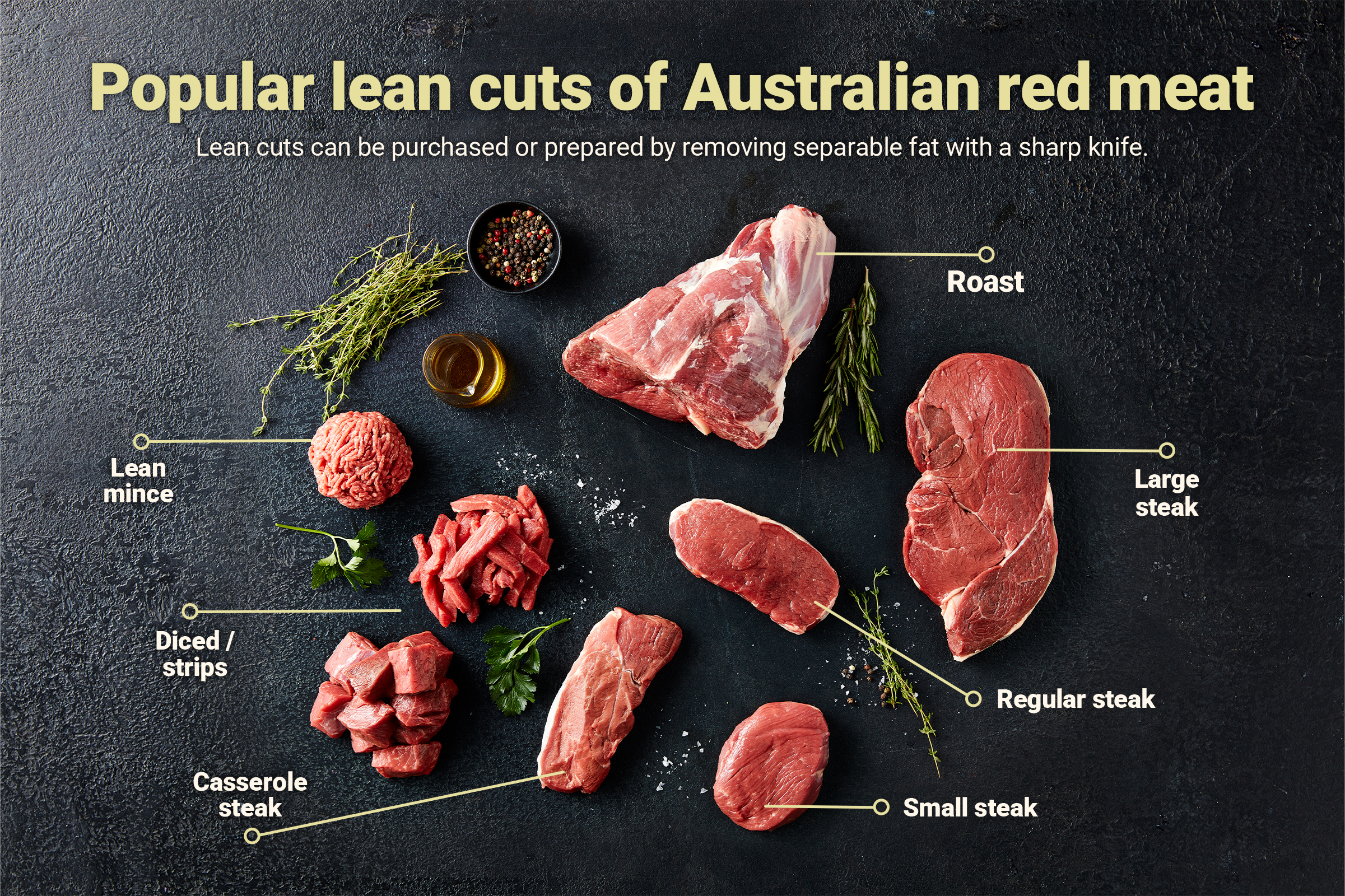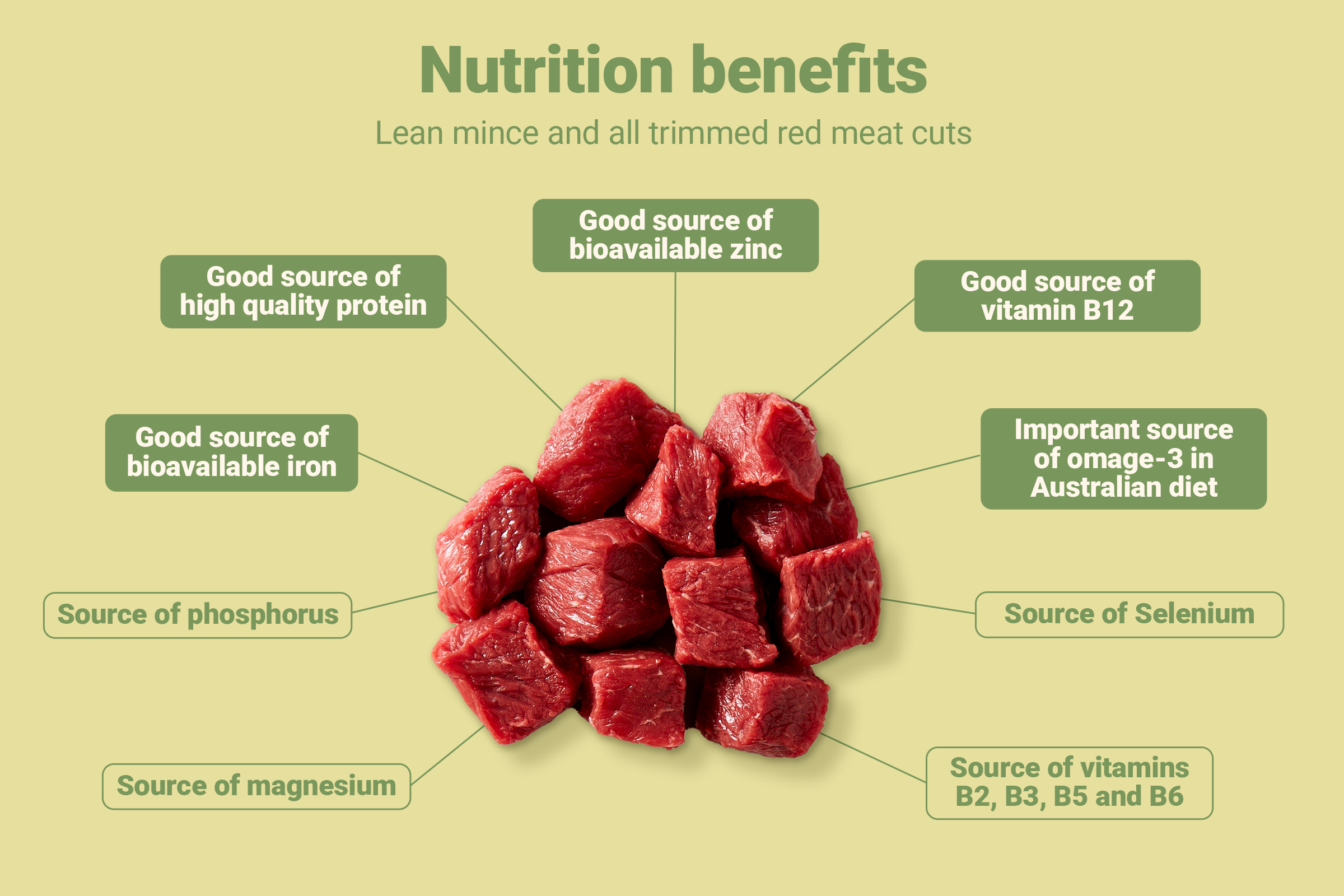

Nutrition information, cooking tips and images about popular cuts of Australian beef and lamb to communicate practical information about buying and preparing a variety of lean cuts.
When trimmed of separable fat, all cuts of Australian beef and lamb are lean [3]:
• Lean, unprocessed cuts of red meat are recommended in the Australian Dietary Guidelines, including lean mince, all cuts of Australian beef, veal, lamb, mutton and goat meat trimmed of separable fat and lean, low sodium sausages. Cuts include steak, casserole cuts, roasts, chops, diced and strips [1].
• Processed meats, including ham, bacon, deli meat, regular sausages and other manufactured products that are high in saturated fat and sodium are considered ‘discretionary foods’ [1].
Did you know?
• Lean beef mince is a popular choice, around 50% of mince sold in Australia is lean and has 4% fat and <2% saturated fat, raw weight[2].
• When trimmed of separable fat, all cuts of Australian beef have less than has 3% fat and 1% saturated fat, raw weight[3].

Lean mince and all lean cuts are sources of 12 essential nutrients[4].
When trimmed of separable fat, the nutritional benefits of lean mince and trimmed cuts are the same[5].
Key nutrients to describe nutritional benefits include:
• Excellent source of bioavailable iron
• Excellent source of bioavailable zinc
• Good source of high-quality protein
• Good source of vitamin B12
• Source of omega-3
• Source of B vitamins (B2, B3, B5 and B6)
• Source of selenium, magnesium and phosphorus
*A detailed examination of available data suggests the nutrient content of lean meat has remained stable over time and differences in the nutrient content of cuts from the hind-, loin and forequarter are within the range of expected natural variability.

On average, the nutritional benefits of grass-fed and grain-finished meat available for purchase in butchers and supermarkets in Australia are the same [6].
• Beef, lamb, veal, mutton and goat meat produced in Australia have low levels of marbling because they are predominantly grass-fed and the duration of any feeding on grain in Australia is relatively short.
• Ruminants convert the alpha-linolenic acid (ALA) contained in the grasses into long chain omega-3s and consequently, the amount of ALA in the grass determines levels of omega-3s in the meat.
• Since levels of ALA in grass varies according to seasonal and regional conditions, levels of omega-3s in grass-fed and grain-finished meat are within in the range of expected natural variability.
Did you know?
• The nutritional benefits of lean beef, lamb, veal, mutton and goat meat produced in Australia are the same.
• The fat content of Wagyu meat is largely determined by the type of feeding regime - grass-fed meat and grain-finished meat is lean and highly marbled meat is grain-fed for more than 300 days.

Moisture loss is the main impact of cooking on the nutrient content of red meat:
• Except for moisture loss, differences between raw and cooked meat for other nutrients are small and most likely explained by concentration due to moisture loss and natural variability between samples[5].
• Cooking method does not significantly influence the content of fat and other nutrients [5,7].